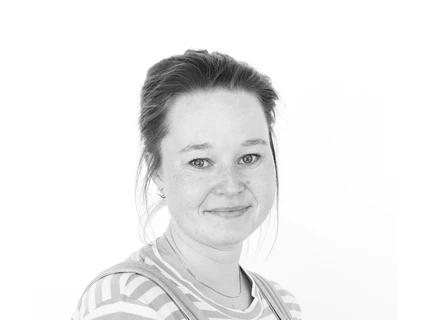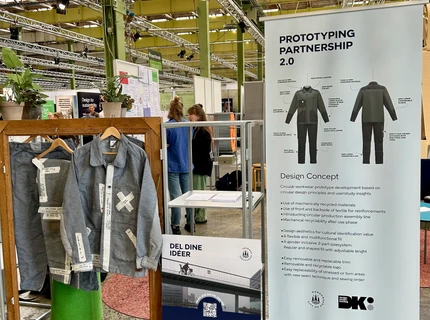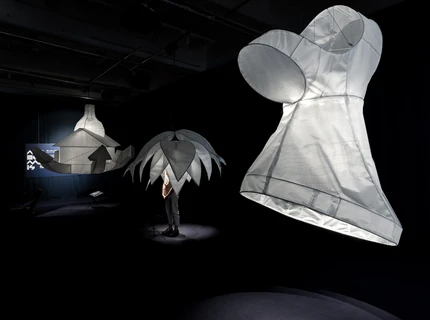
Foto: Maximillian Schmidauer
Sustainable care requires new thinking
As the population gets older, there is growing demand for sustainable solutions that can address environmental concerns as well as the increasing pressure on our care and welfare systems. One of the biggest environmental challenges in elder care is diaper waste – a category that amounts to 50,000–100,000 tonnes of waste annually in Denmark alone, with significant CO₂ emissions. But what if we could rethink not just the products, but also the care practices surrounding them?
Morten Krogh Petersen, Associate Professor, and Victoria Ankerstjerne, PhD fellow – both researchers at Kolding School of Design – contribute to the visionary project Socio-Technical Transition for a Circular Diaper System in 2030. The project aims to transform our approach to diaper management and promote care that is both more sustainable and more aligned with the existing workflows and everyday realities of municipal care homes.
The project introduces an innovative hybrid diaper system – a reusable outer chassis with a replaceable inner insert. This approach requires a new waste management infrastructure, where some parts are washed and reused, and others sorted and recycled. The goal is to significantly reduce diaper waste while continuing to support high-quality care.
When sustainability meets care
Morten Krogh Petersen emphasises that sustainability in the care sector is not just about products and technologies – it's about reconciling care, workflows, and quality of life with pressing environmental demands:
- We live in a society with an ageing population and increasing needs for care – and that drives demand for all sorts of products. It means the sustainable transition must be approached differently than we might initially assume. The health and care sector is, by nature, focused on care – with priorities quite distinct from sustainability – and yet this is exactly the challenge we’re embracing.
But how can we meaningfully integrate sustainability into something already centred on so many other critical needs?
Local adaptation is key
Victoria Ankerstjerne recently completed 160 hours of ethnographic fieldwork across several care homes, conducting interviews and observations with care staff.
- My fieldwork made it clear that sustainable solutions cannot simply be imposed from outside – they must be aligned with the constant, local adjustments care workers make in their daily routines, both in relation to residents and their physical environment. Real change depends on working with existing people, products, and methods – not trying to force a new system onto established practices.
This insight is crucial to the project's development, which also aims to honour the deep knowledge that care professionals bring to their work.
- Victoria’s fieldwork shows that we must understand care staff as skilled knowledge workers, says Morten Krogh Petersen. They possess a wealth of understanding about residents, products, and the practical possibilities and constraints of care. They continually transform that knowledge into effective solutions for everyday challenges.
The research also highlights how diapering is interwoven with other care tasks – affecting what waste actually ends up in the diaper bins. This presents challenges for implementing new waste systems. The project also accounts for the specific complexities of caring for people with dementia. As Victoria Ankerstjerne reflects:
- As more people live longer, the number of individuals with dementia will also increase – and that’s a critical factor when considering changes in the care sector. It’s extremely complex to implement new practices in care homes where many residents have cognitive impairments. Dementia – with all its variations – profoundly shapes daily life, including diapering routines. That raises essential questions about how we develop care products that support both sustainable and preventive care going forward.
Morten Krogh Petersen adds:
- We must ensure that new technologies in products are accompanied by sensible, thoughtful development of care practices.
Design and interdisciplinary collaboration
Design plays a crucial role – not only in developing a product but in shaping the care practice around it. Morten Krogh Petersen explains:
- Design here isn’t just about the physical form of a diaper. A new diaper changes the practice it’s part of. So design must also help us understand and evolve the ways those practices work – we need to understand the human interaction with diapers and the many other artefacts found in care homes. That’s the dimension we aim to contribute: a more ontological understanding of design. By combining technology, design, and close study of actual care practices, we aim to develop solutions that consider both environmental impact and the needs of those giving and receiving care.
Victoria Ankerstjerne adds:
- This project has also taught us important lessons about cross-disciplinary collaboration. Traditionally, humanists, designers, and engineers approach problems differently – but in this project, we’ve found a model that merges technical data with lived experiences from care homes. It’s made our collaboration stronger and given us a more holistic approach, where both everyday knowledge and technical insight drive the development of a more sustainable and compassionate care system.
Both researchers hope this approach will inspire other areas of welfare technology development – where diverse fields work together to ensure that new solutions are not only innovative but also usable, relevant, and valuable in everyday life.
About the Project
Project partners include Abena A/S, Odense Renovation, Odense Municipality, Aarhus Municipality, Kolding School of Design, and the University of Southern Denmark.
By bringing together stakeholders from across the entire value chain – from design and production to users, logistics, and waste management – the project Socio-Technical Transition for a Circular Diaper System in 2030 aims to reduce CO₂ emissions, waste volumes, and resource consumption, while also creating better working environments and new job opportunities in circular logistics.
The project runs from 2024 to 2027 and is part of TRACE, funded by the Innovation Fund Denmark.
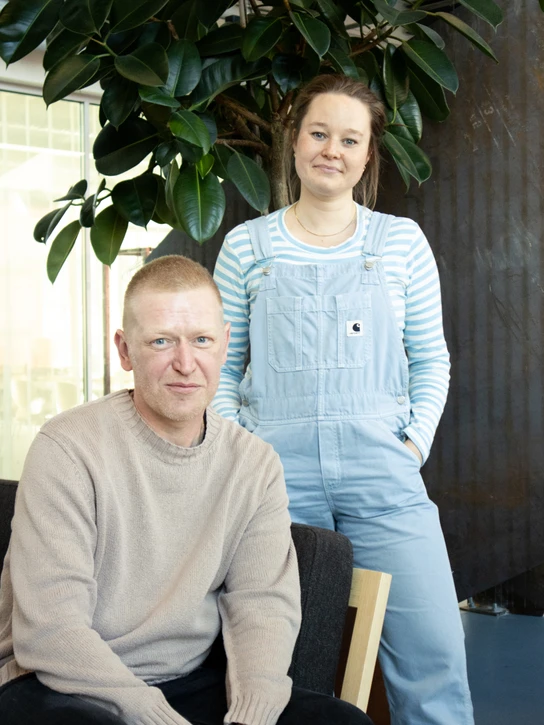
Victoria Ankerstjerne and Morten Krogh Petersen are, respectively, a PhD fellow and an associate professor at Kolding School of Design, affiliated with the school’s LAB for Sustainability and Design.
Conference abstracts and papers
Morten Krogh Petersen and Victoria Ankerstjerne continuously contribute new knowledge and perspectives on the project through papers and at conferences:
Designing with Temporalities: The Case of Diaper System 2030. Conference abstract presented at DASTS24: Elegies of waste, surplus, and excess. Read more here.
No Product is an Island: The Case of Incontinence Pads in a Nursing Home. ‘Full paper’, accepted for oral presentation at PLATE: The 6th Product Lifetimes and the Environment Conference. Read more here.
Embodied Speculation: A Methodological Reflection About the Handling of Bodily Waste in Practice. Conference abstract accepted for oral presentation at 7th Nordic STS Conference STS in and out of the Laboratory. Read more here.
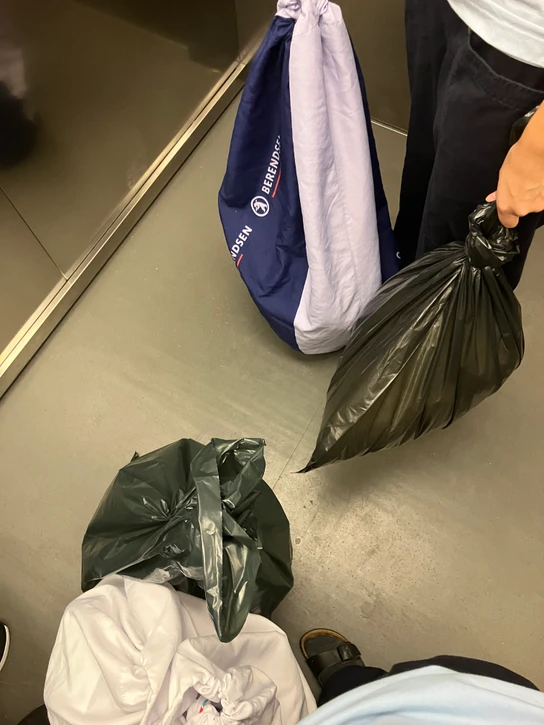
Diaper waste is managed differently from care home to care home, which is why it is crucial to conduct a thorough investigation of the existing practices at the specific locations involved in a project like Diaper System 2030.
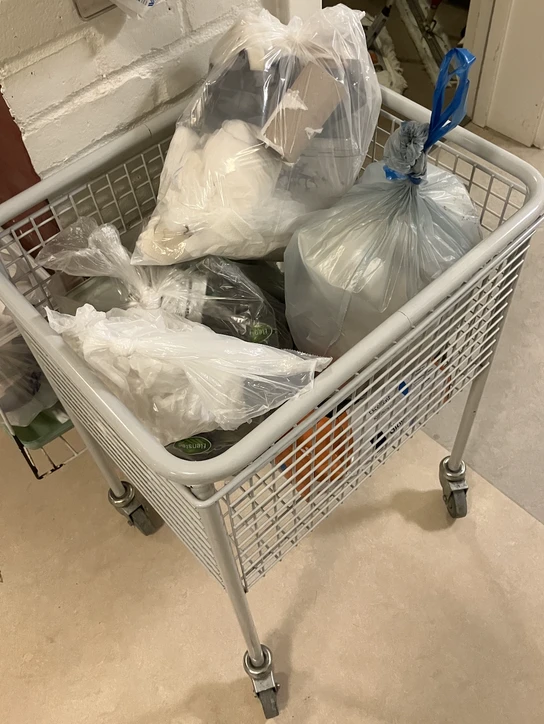
Waste management and generation are shaped, among other things, by the care homes' infrastructure, including the physical environment, resident composition, and workflows, as all of these factors together set the framework for what is practically and logistically possible.

Victoria Ankerstjerne and Morten Krogh Petersen are, respectively, a PhD fellow and an associate professor at Kolding School of Design, affiliated with the school’s LAB for Sustainability and Design.

